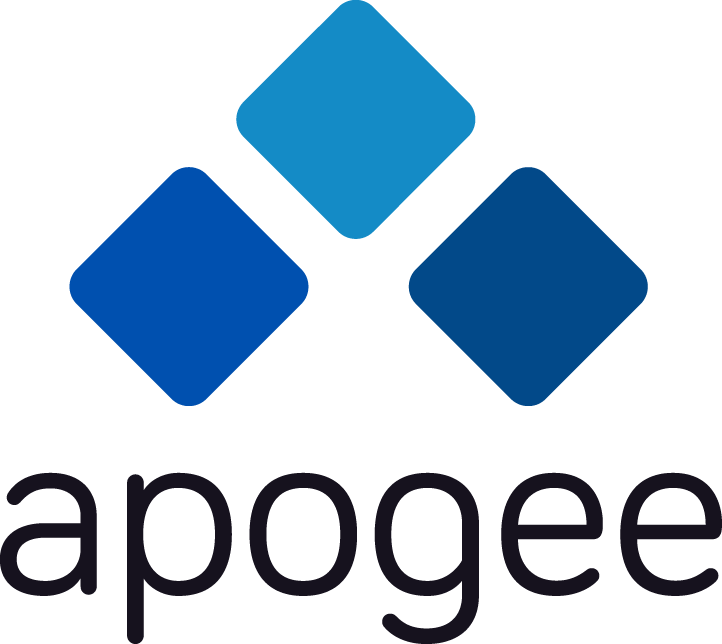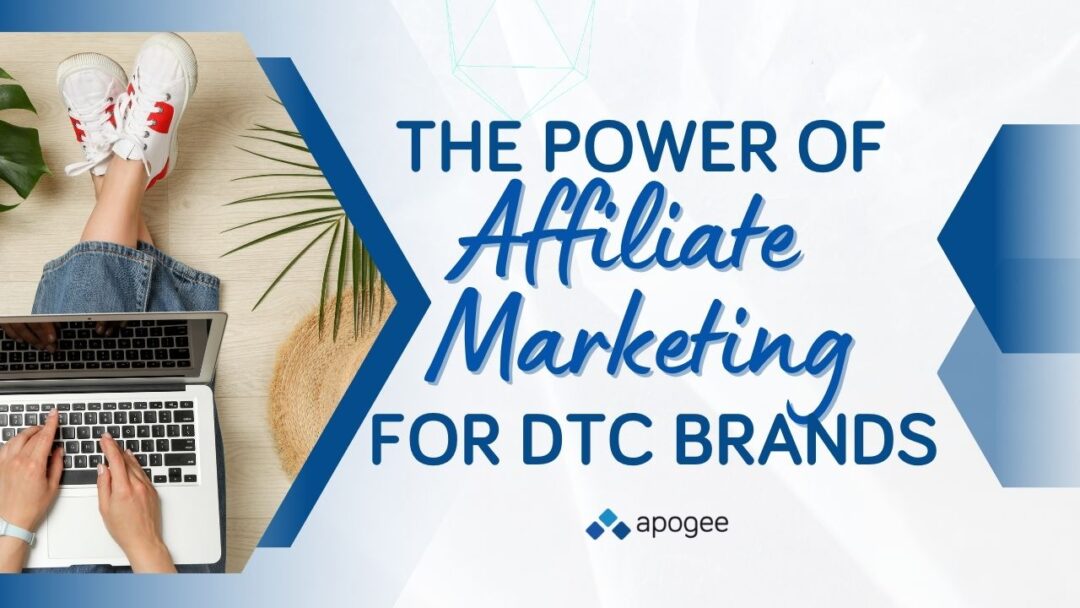
Introducing Apogee Insiders
November 7, 2019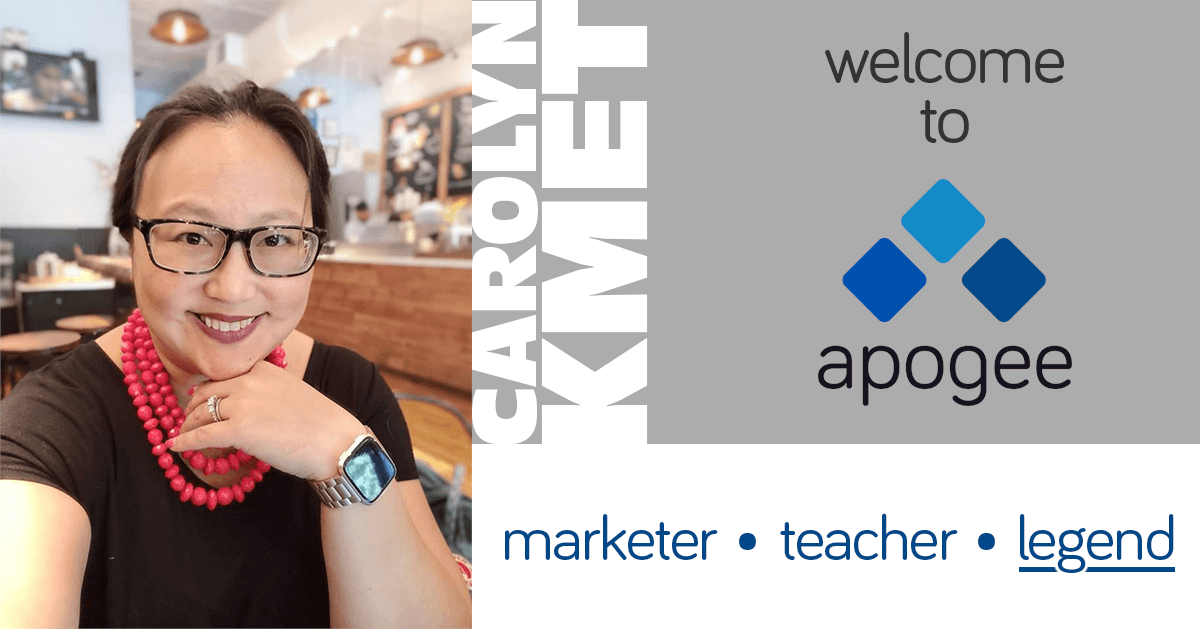
Please Welcome Carolyn Kmet!
November 22, 2019A Realistic Approach to Program Projections

Apogee CEO
As the head of business development for Apogee, I advocate for my team of affiliate management experts, our partners and the industry. I want every affiliate program to be profitable and successful. I want affiliates in those programs to feel the satisfaction of cashing big payouts each month. I want my team to be proud of the work they do for our clients.
My approach to client acquisition establishes a foundation of trust. In my experience, the best way to establish trust is to be straightforward about sales forecasting. Sometimes, the results of the forecast are not quite what the prospective client expected to see.
Expectations
It’s easy to promise immediate and substantial growth in the affiliate marketing channel, but that’s not how this works. Sales will not triple within three months or increase tenfold in a year. Honest, reputable industry experts say that success takes time and there are no shortcuts. They also say the results are worth the patience. Affiliates can add significant incremental growth and take a brand to the next level if the program is handled right.
Liz Gazer, a veteran affiliate manager since 2003, gave us a unique perspective on expectations.
“Affiliate marketing is a long-tail approach requiring commitment, strategy and time to produce profitable results for advertisers,” she said. “It’s not a solution to a short-sighted business problem or a standalone, set-and-forget magic sales machine, but a legitimate marketing channel that must co-exist alongside other channels like organic and paid search, social media, display or any other.”
The Apogee team builds balanced programs using several models of affiliate partners. We work with a select number of handpicked coupon, deal, cashback and other “corporate models,” but our focus is recruiting, educating and activating content-based affiliates. We love working with bloggers, product reviewers, Instagrammers, YouTubers and traditional niche marketers that understand performance marketing. They add context and credibility to our clients, and their evergreen posts drive new customers for years.
The goal is to create an affiliate program where the majority of sales come from content partners, and we have done that consistently across many different categories.
The question I hear most frequently from prospective clients is, “How many sales should we expect and how fast can you ramp it up?” The response laid out in my proposals is always the same: it is impossible to account for every variable because every merchant’s needs are unique.
Still, we have identified the most impactful predictors, and we rely on these to establish realistic expectations before a prospective client signs with Apogee.
1. Overall Online Sales
Affiliate marketing supplements existing sales. Affiliates cannot, and will not, help a company with zero online sales. The most effective affiliates need proof of conversion. They want to know that their efforts will yield profitable results. We need at least six months of transaction and customer demographic data before considering a launch of a new affiliate program. Preferably, prospective clients will have three to five years of multi-channel success, a minimum of $500,000 in annual revenue. They should be able to provide customer data such as average lifetime value.
Based on the overall sales, we can begin to reasonably forecast growth after the first six months of a new program launch. The framework is established, the first affiliates are recruited, and they begin sending clicks over the first six months. A typical result during this time can be an increase in sales of up to 5%. If a new program has any sales in the first two months, that’s a sign of good things to come. The ROI will start in months 6–12 as the program matures.
Within the first two years, a healthy and growing program could yield 20%–40% incremental growth. When year-over-year comparisons begin, our best case studies have seen sales in the channel increasing at a rate of 100%–300%.
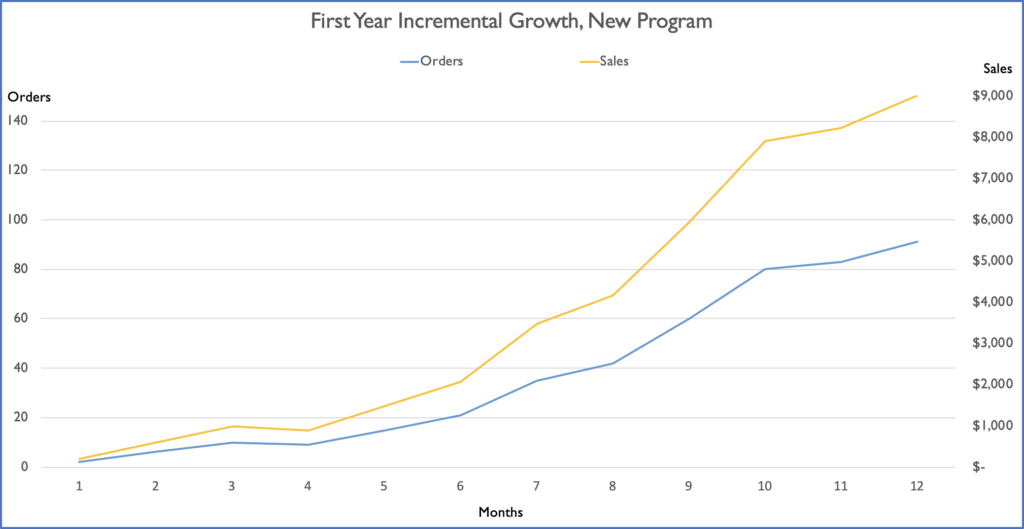
2. Website Conversion
An important contributor to the success of any affiliate marketing program is the conversion rate on the merchant’s website. The products must be wanted or needed by consumers and the online shopping experience must be swift and painless.
Apogee brings the affiliates, and the affiliates work to send traffic to our client's websites. As soon as that customer is ready to buy, it is incumbent upon the merchant to close that sale as fast as possible. The industry standard for conversion is 3%–5%. Categories such as shoes or furniture, and high-ticket items across a variety of categories, often have a conversion rate under 1% because those customers shop around and take their time. A healthy conversion rate from a mature program is 5%–8%.
I’ve seen affiliate revenue skyrocket when a brand optimizes its conversion rate. For example, a program with an average of 7,000 clicks per month, an average order of $99, and a conversion of 2.6% will yield 183 orders. That’s $18,117 in sales. What happens if the brand improves conversion to 4.3% with the same number of clicks? That’s now 302 orders at $29,898. An increase of just a couple of percentage points can nearly double sales. Affiliates need to do their best to send relevant traffic, but the ultimate success is found in the website’s conversion.
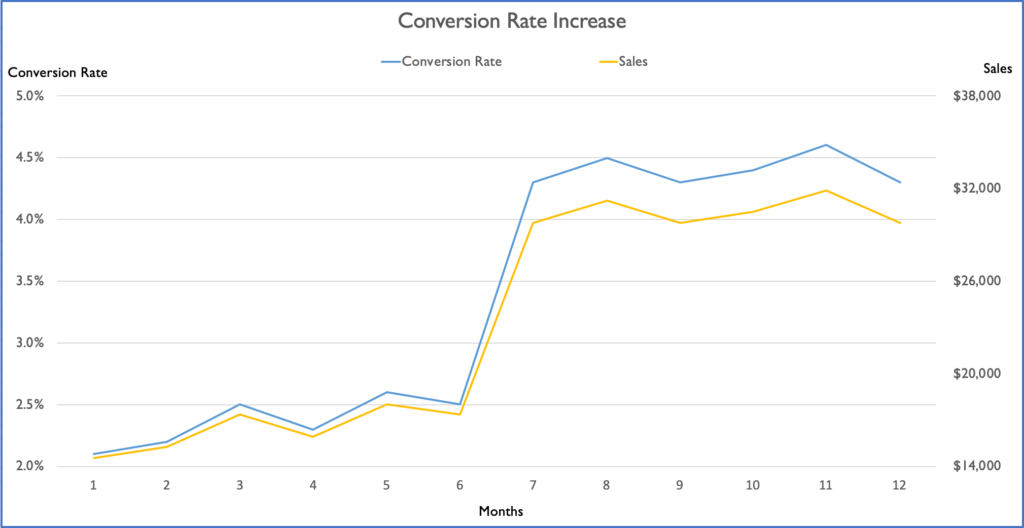
conversion increase at month six
3. Seasonality
Most online retailers have a peak season based on their major product lines. Gift-oriented sites will earn the majority of their revenue in Q4. Health and exercise products will spike in Q1 when customers are thinking about getting in shape for the new year. Some of our clients have multiple seasons. They are huge in Q4 but also spike during the summer. Understanding seasonality and preparing for it is a vital piece of sales forecasting for affiliate programs.
Launching a new affiliate program in November in order to capitalize on the holiday spending season will leave any merchant disappointed and disillusioned about affiliate marketing. I have watched these programs launch over the years; the merchants hear wonderful things about affiliate marketing, but they are woefully unaware that it takes time to recruit, educate and activate the right partners. They launch a program with unrealistic expectations and are left with a sour taste when the program fails. Online retailers should expect to increase sales over a period of 6–12 months and to do that, seeds need to be planted today and watered continually.
In the following chart, note the three bumps. At (1) and (2) we see the summer bumps that this client experiences. Then, at (3) we see the culmination of the massive holiday bump. We know this to be due to holiday gift shopping because the average order declines while sales rise. People aren’t shopping for themselves; they’re shopping for others.
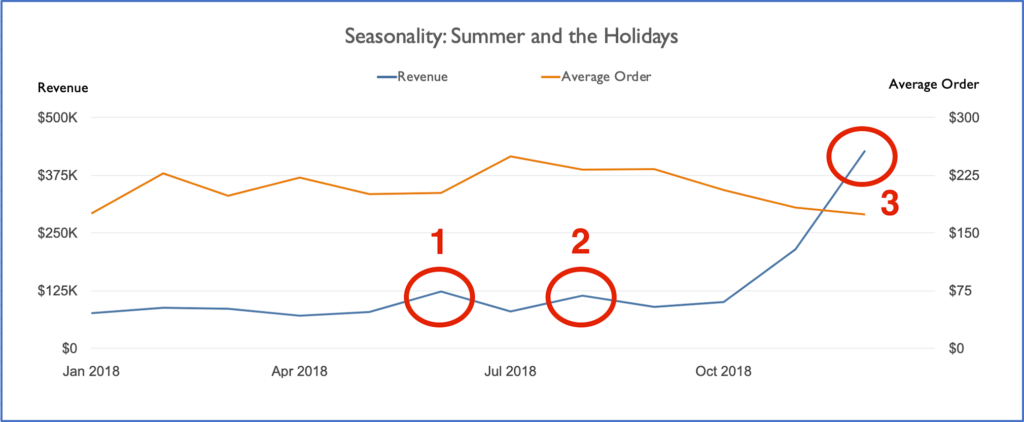
When forecasting, I account for a company’s seasonal trends. The best time to launch a new program, or tune-up an existing one, is at least three months before the busy season. If the slow season is about to start, the best thing to do is to get aggressive with promotions and ideas. We have helped merchants mitigate the expected drop in sales during slow periods.
4. Competition and Demand
The most successful affiliate programs will always be with brands that offer unique products that are only available on one website. National brands with millions of dollars in sales will have massive volume running through the affiliate channel, but a medium-sized online retailer with the right offer and the right funnel can become a powerhouse.
When forecasting affiliate sales for a new brand, all parties involved need to be as objective as possible. We ask tough questions and expect honesty with the answers. How hard is it for a customer to find your product locally or on Amazon? What is the convenience or benefit of buying through your website?
How many competitors do you have with similar products and existing affiliate programs?
A company can claim a higher quality product, a better story, or an aggressive starting payout, but sometimes the competition is already paying the best affiliates. The hard part is getting their attention and convincing them to give a competing merchant a shot.
A fast way to overcome these challenges is to discuss with Apogee different models of affiliate partners. Paid search and shopping cart abandonment affiliates can jumpstart a program, leading to healthy statistics when content partners are recruited and activated. The pros and cons of each affiliate type must be considered, along with the effects that other marketing channels can have on the affiliate channel.
5. Transparency and Cooperation
During the sales process, we encourage prospective clients to ask us about more than just traffic and sales. Prospects should feel comfortable asking questions to get to know more about the team that will be facilitating those important affiliate relationships. How many programs are your managers managing? What is the average client retention? How will your experience translate to my products?
Sometimes merchants want to hire us as babysitters for their programs while still expecting growth as they concentrate on other channels and departments. Affiliate programs lacking cooperation between the merchant and the agency grow at a minimal pace. We need cooperation from our clients and a commitment that the affiliate channel will be an integral part of our clients’ sales and marketing moving forward. When it comes to sales forecasting, we plan the program out together with our prospective client. We foster an understanding of the potential as a team. Apogee never promises “too good to be true” forecasts. The truth is, a newly launched program will spend six months building the foundation, attracting quality affiliates and sending valuable new customers to the client. For an existing affiliate program, a rejuvenation could be as fast as six weeks. The Apogee team optimizes the foundation quickly and reinvigorates a stale program with an aggressive strategy.
About Apogee
Founded in 2009 as Greg Hoffman Consulting, Apogee has been a finalist for 11 industry awards, including Agency of the Year, Best Use of Technology, OPM of the Year, Affiliate Marketing Advocate, and Affiliate Manager of the Year.
Ready for Management?
Contact Apogee for more information. The agency stands ready to assist retailers with all their affiliate marketing needs.
